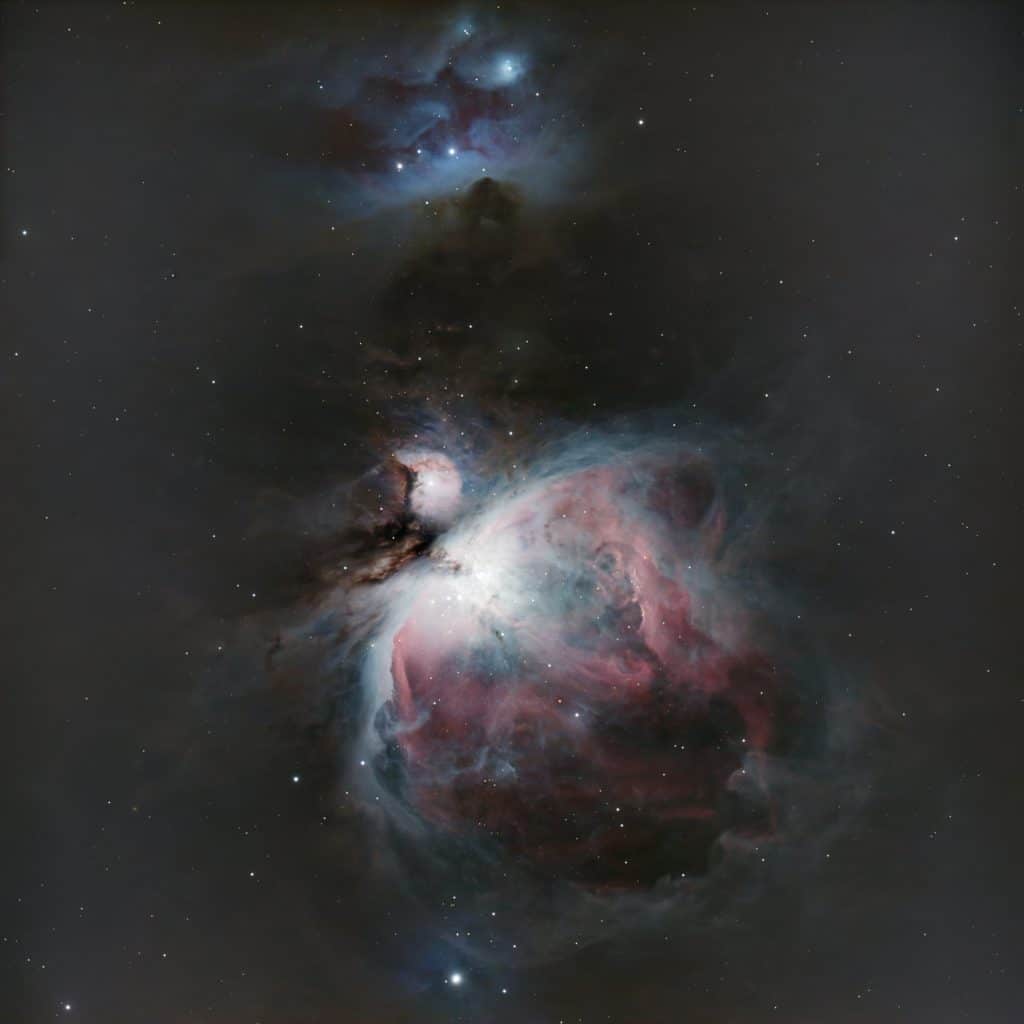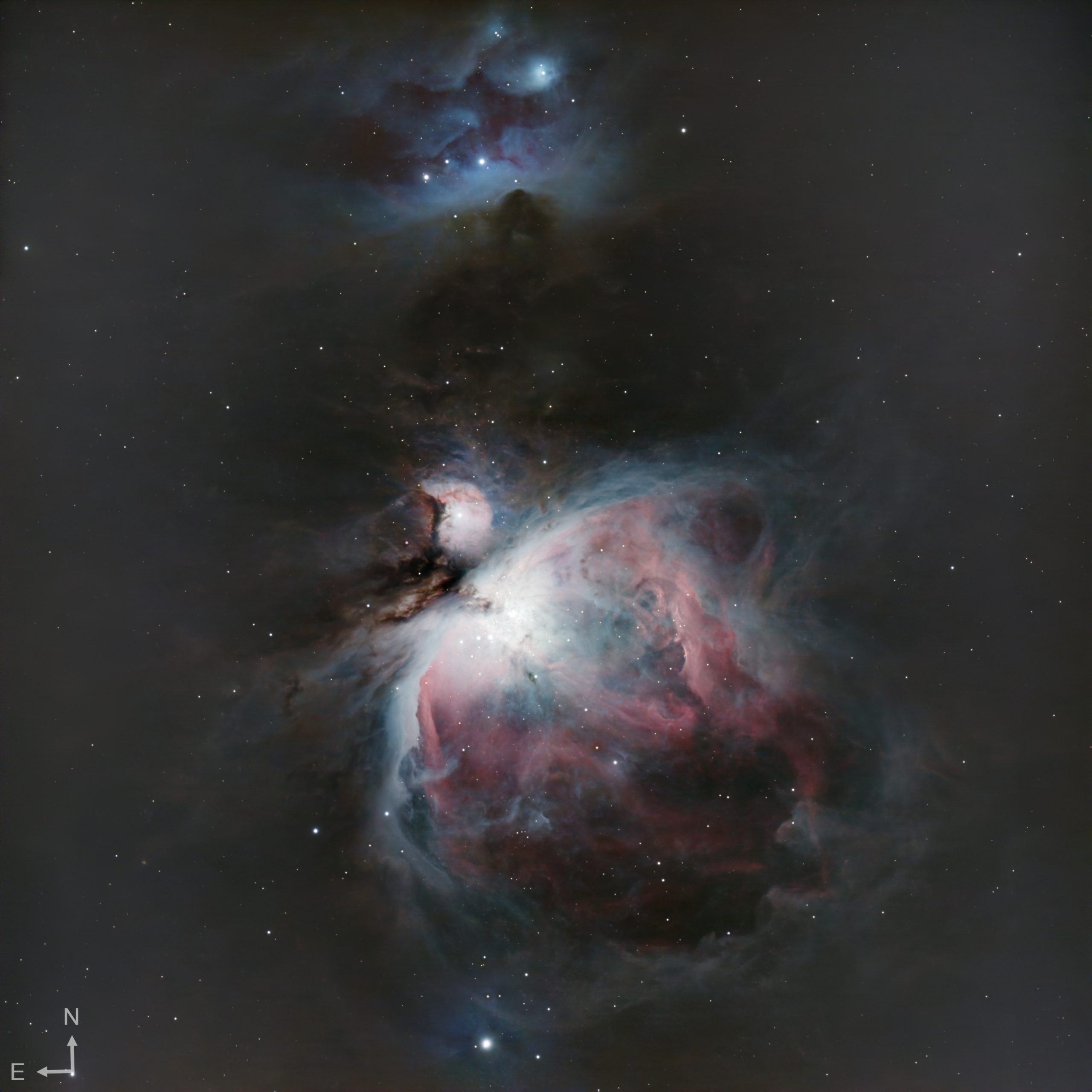Table of Contents
Almost all of 2025 has been poor for astrophotography. The weather has been overcast. For this reason, I have not had time to observe some of the fabulous winter targets here from the backyard. But Februrar has already proven to be better than January and has already provided a couple of nights out.
M42 – The jewel of the winter nights
Nestled in Orion’s sword, the Orion Nebula (M42) is a dazzling stellar nursery, glowing with ionized hydrogen and sculpted by young, massive stars. At just 1,344 light-years away, it is one of the closest and most breathtaking star-forming regions visible from Earth. The Trapezium Cluster at its heart energizes the surrounding gas, creating the nebula’s characteristic pinks and purples in long-exposure astrophotography. Capturing M42 reveals intricate details of its swirling dust lanes, dark filaments, and vibrant emission clouds—a true gem of the winter sky, best viewed and photographed on crisp, clear nights.
without further here is my 2025 version of the Orion Nebula.

Capturing the Orion Nebula
One of the challenges when photographing M42 is that the core of the nebula is very bright leading to overexposure when shooting without filters as I am doing. To compensate for this I have decreased the exposure time from my regular 120 – 180 s, down to 10 seconds. But this leads to a very large stack of data, in a short period of time. In my case, I managed to obtain 244 sub exposures in around 30 minutes.


Facts on M42
Right Ascension: 05 35 17.3
Declination: -05 23 28
Distance: 1344 light-years
Apparent visual magnitude: 4.00
Apparent visual dimension: 1.08×1.00°
Constellation: Orion
Nebula radius: 12 light-years
Names: M42, NGC 1976, Orion Nebula

